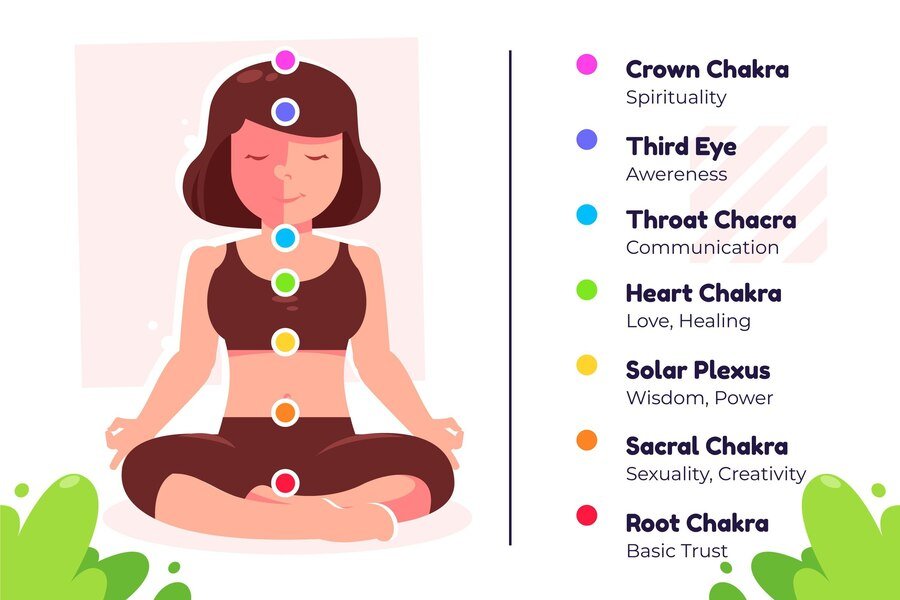Discovering a practice that nourishes the body and mind during our hectic modern lives is a treasure. Let me introduce you to yoga, a centuries-old practice that entails much more than just doing poses. This investigation explores yoga’s tremendous and sometimes disregarded health and mental advantages. Let’s examine the benefits of yoga that go beyond improving flexibility and mental health to make it a powerful holistic practice.

1. The Basis: Comprehending the Mind-Body Link in Yoga
Let’s first examine the mind-body connection, which is the foundational idea of yoga, before we explore the hidden treasures. Yoga is a confluence of mind, body, and breath, not merely stretching. The asanas, or poses, are only a small part of the larger yoga concept, which aims to balance mental and physical health.
2. Adaptability Of the Mat
Although many people start yoga hoping to become more flexible, the advantages go well beyond touching your toes. Yoga’s steady increase in flexibility through its gentle stretches and postures lowers the chance of injury from everyday activities and improves joint health overall.
3. Stress Reduction: Mental Peace, Physical Well-Being
Stress may negatively impact our physical and mental well-being in a world where stimuli are always there. Yoga, which combines mind-calming techniques, including mindfulness and meditation, is becoming known as a potent stress reliever. What was the outcome? Lower cortisol levels, better sleep, and a more robust immune system—evidence of the complex relationship between the mind and body.
4. Strengthening: Beyond What Is Visible
Although yoga doesn’t need weightlifting, it does develop strength. Plank, downward dog, and warrior positions are asanas that work for several muscle groups and enhance overall strength development. The deliberate, methodical motions improve mental attention and strengthen physical strength—a double advantage that is sometimes overlooked.
5. Finding a Balance: Improving Harmony and Consistency
Balance is a mental quality in addition to a physical one. Yoga positions improve coordination and focus by testing psychological and physical stability. Pose balance develops attention and teaches the mind to be in the moment; this is a useful ability off the mat in daily life.
6. Emotional Hardiness: Taking Care of the Mind
The bustle of life frequently causes emotional health to suffer. Yoga offers a haven for resiliency and emotional release. Meditation and mindful breathing help people become more self-aware, which enables them to handle emotions gracefully. The emotional intelligence one acquires on the mat is a useful skill while overcoming obstacles in life.
7. Breath: A Link Between the Body and the Mind
Pranayama, or the discipline of regulated breathing, is essential to yoga. Breath regulates the neurological system and acts as a link between the mind and body. Intentional, deep breathing soothes the mind, lowers anxiety, fosters clarity, and oxygenates the body.
8. Better Posture: Evidence of Mind-Body Harmony
Poor posture is a prevalent problem in a world where sedentary habits are the norm. Yoga strengthens the core and promotes an erect posture by bringing awareness of body alignment to the practitioner. The advantages also extend to mental health, as a straight spine raises self-esteem and mood.

9. Yoga as a Moving Meditation: Mindfulness in Motion
Though most people associate meditation with sitting still, yoga turns meditation into a dynamic practice. Every posture offers a chance to practice mindfulness, urging practitioners to savor the present. As a result, an increased level of awareness permeates everyday life and encourages a more deliberate and conscientious way of living.
10. Holistic Healing: The Effect of Yoga on Mental Well-Being
Beyond only the physical poses, yoga is a comprehensive mental health treatment technique. Research has demonstrated that it is effective in lessening PTSD, depression, and anxiety symptoms. Yoga’s meditative elements emphasize self-care and self-compassion as a non-pharmaceutical approach to mental health.
In Conclusion, Embrace The Holistic Harmony Of Yoga
It becomes clear that yoga is a way of life rather than just an exercise regimen when one explores its hidden health advantages for both the body and mind. The practice creates a tapestry of well-being, including mental and physical resilience. Now spread out your mat, take a deep breath, and let the overall harmony of yoga lead you to a more balanced, healthy existence where your body and mind work together.
FAQs
Q1: Does yoga only improve physical flexibility, or does it also provide mental health benefits?
A comprehensive discipline that goes much beyond flexibility is yoga. In addition to improving physical flexibility, it fosters mental health via breath control, awareness, and meditation.
Q2: Is yoga appropriate for beginners, and how does it reduce stress?
A great way to relieve tension for everyone, including newcomers, is via yoga. It’s useful and approachable for beginners because of the deliberate breathing and soft movements that trigger the relaxation response.
Q3: Is it possible for yoga to increase strength, or does it require more conventional strength training?
A: Definitely! Yoga uses a variety of positions that target different muscle areas to increase strength. Even though it might not require lifting weights, the deliberate motions help build overall strength.
Q4: Does yoga help people become more emotionally resilient, and if so, how?
A: It’s true that yoga fosters emotional fortitude. By combining mindfulness, regulated breathing, and meditation, people may release their emotions and develop self-awareness, which enables them to deal with their emotions gracefully.
Q5: Is yoga good for those with bad posture, and how does it help?
A: Practicing yoga helps with posture. The exercise encourages an upright stance, develops the core, and increases body awareness. Frequent yoga practice may help with posture and its psychological and physical advantages.
Q6: What distinguishes yoga from typical meditation practices, and might it be a type of movement meditation?
A: Definitely! Yoga makes meditation more dynamic than it would be otherwise. Every posture turns into a chance for mindfulness, enabling practitioners to reap the physical benefits of the practice while being in the present.
Q7: How does yoga affect mental health, and is it a useful adjunct to counseling?
A: Yoga improves mental health by easing the signs of despair and anxiety. It can be a beneficial addition to conventional therapy, providing a comprehensive strategy that prioritizes self-compassion and self-care.
Q8: Does yoga’s deep breathing technique only promote relaxation, or are there further health advantages?
A: In yoga, deep breathing regulates the neurological system and connects the mind and body. It not only helps you relax, but it also increases mental clarity, lowers anxiety, and oxygenates the body.

